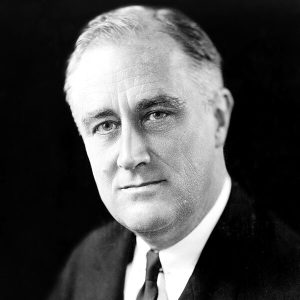 At Warm Springs, Franklin D. Roosevelt, 32nd president of the United States found the strength to resume his political career and a positive outlet for his own personal struggle with polio. Roosevelt loved Warm Springs and built the Little White House in 1932 while governor of New York. The Little White House is an unpretentious house built from longleaf pine trees surrounding Warm Springs, Ga. The longleaf pine was one of Roosevelt’s favorite trees because of its strength and use in building.
At Warm Springs, Franklin D. Roosevelt, 32nd president of the United States found the strength to resume his political career and a positive outlet for his own personal struggle with polio. Roosevelt loved Warm Springs and built the Little White House in 1932 while governor of New York. The Little White House is an unpretentious house built from longleaf pine trees surrounding Warm Springs, Ga. The longleaf pine was one of Roosevelt’s favorite trees because of its strength and use in building.
He was elected President in November 1932, to the first of four terms. By March of 1933 there were 13,000,000 unemployed, and almost every bank was closed. In his first “hundred days,” he proposed, and Congress enacted, a sweeping program to bring recovery to business and agriculture, relief to the unemployed and to those in danger of losing farms and homes. Many of his actions were the result of spending time with people in rural Warm Springs, GA. Often he wrote key actions while sitting at his folding table desk on the portico of the Little White House.

Even while President Roosevelt fought the Great Depression and led the nation through World War II, he still visited Warm Springs and the Little White House and dedicated time to the Warm Springs Foundation. The organization became the National Foundation for Infantile Paralysis, the sponsor of the “March of Dimes,” and was instrumental in promoting the development of a cure for polio.
FDR piloted the country successfully through two major events – the Great Depression and World War II. In his message to Congress in June 1934, FDR stated that among his administration’s objectives, he placed “the security of the men, women and children of the Nation first.” The “security of the home, the security of livelihood, and the security of social insurance,” he stated, “constitute a right that belongs to every individual.” The achievement of these goals, in part through creation of the Social Security system, was among his greatest accomplishments.
As President, Roosevelt continued his conservation policies, and he saw the unemployment brought on by the Great Depression as a way to emphasize environmental planning and projects. The Civilian Conservation Corps, the Farm Security Administration, the Tennessee Valley Authority, and other agencies employed thousands of people planting trees, preventing soil erosion, and building dams for flood control and generating public power. He also added millions of acres to America’s national forests, national parks, and wildlife refuges. Through all of these projects, he adhered to one overall philosophy: that the nation must be responsible and preserve the world we live in for future generations.





